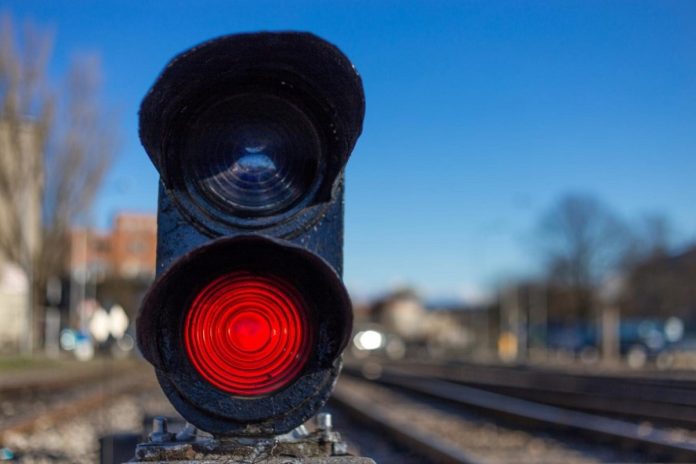Snapshot
The state-of-the-art modern electronic interlocking system covers 26 stations — three on Delhi Division, nine on Ambala Division and 14 on Firozpur Division.
Aiming to enhance safety and efficiency in train operation, RailTel is implementing modern signalling projects worth Rs 224 crore on northern zone for replacing obsolete mechanical signalling system by state-of-the-art electronic interlocking system (EIS).
The modern system covers 26 stations — three on Delhi Division, nine on Ambala Division and 14 on Firozpur Division.
RailTel, the telecom arm of Indian Railways, is implementing modern signalling projects.
According to the railways, EIS has more reliability and safety due to less relays and accessories.
Three stations in Delhi Division are Pehowa Road, Kaithal and Kalayat all in Kaithal district in Haryana on Kurukshetra-Narwana Section.
This section at one end is joining the main line section of Delhi-Rohtak-Jind-Bathinda at Narwana and at the other end it is joining the main line section of Delhi-Panipat-Ambala Cantt-Chandigarh at Kurukshetra.
Talking about it, RailTel Chairman and Managing Director (CMD) Puneet Chawla said, “RailTel is a trusted telecom and signaling arm of Indian Railways. For enhancing safety and efficiency of train operations, it is necessary to replace age old obsolete mechanical signalling system by the state-of-the-art modern Electronic Interlocking System.”
Out of nine stations in Ambala Division, seven stations are on Bathinda-Sri Ganganagar section.
This section is part of Sri Ganganagar-Bathinda-Rajpura section which gets connected to Moradabad-Saharanpur-Ambala-Ludhiana main line section at Rajpura.
These stations are Buluana, Giddarbaha, Malout, Pakki, Panjkosi in Punjab and Hindumal, Kote and Futuh stations in Rajasthan.
The remaining stations of Ambala Division are on Sirhind-Andaura section which also joins with Moradabad-Saharanpur-Ambala-Ludhiana main line section at Sirhind.
These two stations are Anandpur Sahib and Nangal Dam both in Rupnagar district of Punjab.
Ten out of 14 railway stations of Firozpur Division are on Amritsar-Pathankot section — Verka, Kathunangal, Jaintipura all three in Amritsar; Batala, Chinna, Dhariwal, Gurdaspur, Dina Nagar — all five in Gurdaspur District; Jakolari and Sarna both in Pathankot District.
This section provides a diversion or substitute route to Jalandhar-Jammu line. This line has strategic significance also.
The other remaining four stations of Firozpur Division are on Lohian Khas-Phillaur section. Their names are Malsian Shahkot Nakodar, Nurmahal, Bilga all four in Jalandhar district.
This section gets connected to Moradabad-Saharanpur-Ambala-Ludhiana-Jalandhar main line section at Phillaur.
The work has already been commissioned at six stations — three stations of Delhi Division and three stations of Ambala Division.
The first stage implementation on 14 stations of Firozpur Division has also commenced with initiation of planning, design and procurement processes for the equipment.
So far, Rs 65 crore of revenue has already been booked and Rs 105 crore revenue will be booked in financial year (FY) 2022-23 and remaining in FY 23-24.
Under this modernisation project, the existing age old mechanical signalling system is being replaced by a new modern EIS system. This change of system will enhance the safety and operational efficiency.
In addition, the new system will also facilitate trains to run at a higher speed of 110 Kmph from a lower speed of 50 kmph at present.
The EIS system will enable all operations by station master for movement of trains like signal clearance and setting routes by the click of a mouse on the computer provided in his office and provides live view of trains running in the station yard.
It enables automatic verification of last vehicle clearance and facilitates monitoring and fault diagnostics on a computer.
The salient features of the project are:
Train operations thus become much easier, faster and safer due to automation of operations.
Operation of level crossing (LC) gates in the yard has been changed from mechanical to electrical type which further increases efficiency of closing and opening of LC gates.
The train handling capacity of the yard has been increased by allowing simultaneous reception and dispatch of the trains wherever feasible.
The power supply system has been updated to state of the art integrated power supply which is a centralised power distribution system for the entire yard and requires very less space compared to conventional systems. This system can be monitored by station master by means of the indication panel provided in SM office.
Data loggers have been provided to keep record of signaling system operation data. This data helps in analysing all kinds of system failures and it is also possible to analyse events which have taken place during any unusual incident or accident in the yard.
All systems for train operation have been installed in new buildings constructed for this purpose. Fire alarm system has been provided in this building for protection of vital systems.
Chawla said, “This system replacement exercise is a continuous process for Indian Railways and RailTel is playing an important role in this exercise. RailTel also intends to play a significant role in modernising the train control system of the railways through execution of KAVACH (train collision avoidance system-TCAS) which is an indigenously developed automatic train protection (ATP) system. This is proposed to be implemented over long term evolution (LTE) based high speed mobile communication corridor for the railways.”


